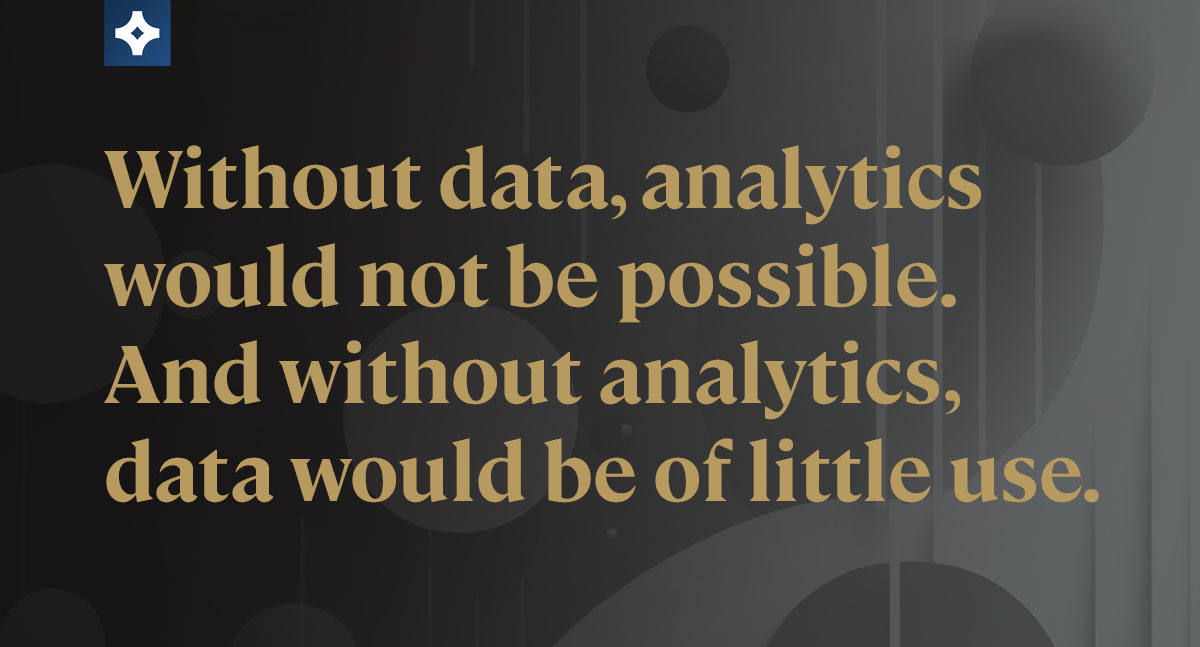Data vs. Analytics: Do you know the difference? And, how does this apply to a school district environment?

As a school district administrator, you may have heard the terms “data” and “analytics” being used frequently (often together or interchangeably), but may not fully understand the difference between the two. It may seem rather basic, but we’ve learned that, at times, it’s nice to be reminded or re-educated about the simple things. In this article, we’ll discuss what the difference between data and analytics is.
What is Data?
Data refers to the raw information that is collected and stored. In a school district setting, this can include things like student performance data, demographic data, school district financial data, etc. Data may come in various forms such as numbers, text, or images. The key characteristic of data is that it is unorganized and unprocessed.
The two primary types of data are:
- Qualitative data is descriptive, expressed in terms of language rather than numerical values.
- Quantitative data is numbers-based, countable, or measurable.
What are Analytics?
Analytics, on the other hand, is the process of examining, connecting, cleaning, transforming, and modeling data to extract useful information and insights. It involves using statistical, mathematical, and computational techniques to make sense of data. In a school district environment, analytics can be used to answer questions, identify trends, and make predictions to improve student outcomes.
There are different types of analytics, including:
- Descriptive analytics: Describes what has happened in the past. It can be used to understand historical data and identify patterns and trends.
- Diagnostic analytics: Examines why something happened in the past. It can be used to investigate specific events and identify the root cause of issues.
- Predictive analytics: Forecasts what is likely to happen in the future. It can be used to make predictions about future events and trends based on historical data.
- Prescriptive analytics: Recommends actions to take based on predictions. It can be used to optimize decision-making and identify the best course of action.
How are Data and Analytics Used Together?
Data and analytics are closely related and often used together. Data is the raw material that analytics processes to extract insights. Without data, analytics would not be possible. And without analytics, data would be of little use. Together, data and analytics have the potential to provide valuable insights that help school district leaders make better decisions and improve student outcomes.
Use Case of Data and Analytics in Education
A school district might collect data on student performance, attendance, and disciplinary actions. By analyzing this data, the district can identify patterns and trends that can help improve student outcomes, such as identifying students who are at risk of falling behind and providing them with additional support.
Another example is a school district collecting data on teacher performance, class size, and resource allocation. By analyzing this data, the district can identify patterns and trends that may help improve the effectiveness of the district’s educational programs and identify best practices.
Conclusion
In summary, data is the raw information that is collected and stored, while analytics is the process of making sense of that data to extract insights. Together, data and analytics provide valuable insights that can help school districts make more informed decisions with the goal of improving student outcomes. As a school district administrator, it’s important to understand the difference between data and analytics and how to use them to build a better data culture and to make data-driven decisions for the betterment of students.
ECRA’s Data and Analytics Solutions For School Districts
At ECRA, our products are designed to help school leaders make more informed decisions with the goal of seeing student growth as the outcome of all their decisions. Yes, our platform is a place where districts can store data. But, where our platform truly helps school districts are the analytics we provide. Connect with us and learn how we not only store data, but we provide the information and analysis you require to help guide your district’s path to student success. If your district is looking for a data and analytics solution, tailor-made for school districts, connect with ECRA Group or visit our Product Overview page to learn more about the services we provide related to K12 data and analytics.







